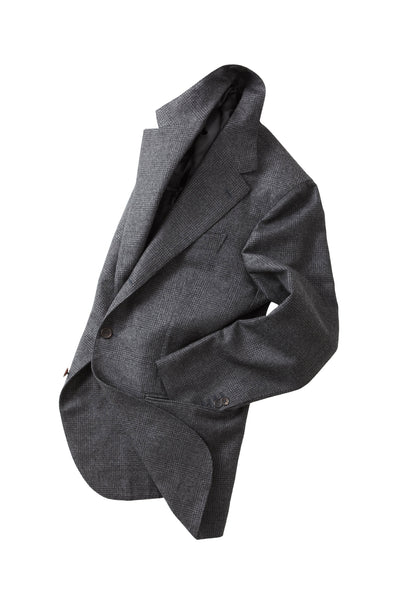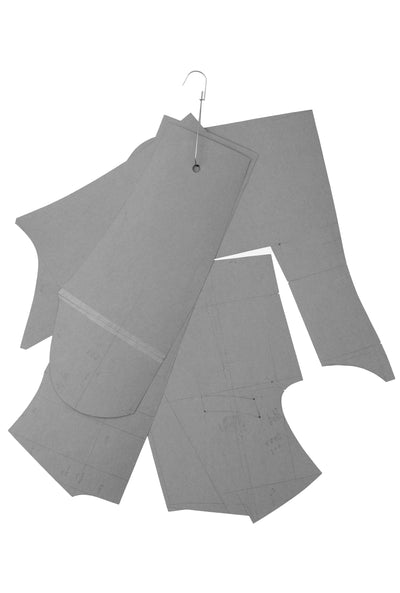Roberta wears a Navy Cashmere Roll Neck and Anglo-Italian Bespoke Trousers in AIT-082, our house charcoal flannel.
We paid a visit to Curator Roberta Cremoncini at the Estorick Collection, the Islington home of one of the world’s foremost collections of modern Italian art.
As part of our ongoing series of collaborations with the museum, we are proud to present these portraits of Roberta in her cashmere roll-neck and bespoke flannel trousers, as well as some shots of the permanent collection housed upstairs.
Downstairs, the museum is exhibiting some 50 paintings and drawings by Pasquarosa Marcelli (1896 - 1973), known simply as 'Pasquarosa', one of the first Italian artists to have a solo exhibition in London, during the 1920s.
Starting from humble beginnings, Pasquarosa established herself as a successful artist during an unpropitious and turbulent historical period that witnessed two world wars. She continued to exhibit within Italy throughout her life and participated in numerous Venice Biennales from the 1930s until shortly before her death in 1973.
With thanks to Roberta, Claudia and the entire Estorick team.
-- Anglo-Italian
Photography: Matthieu Livingston
Pasquarosa, Oysters, Mussels and Lemon (Ostriche, Cozze e Limone), c. 1963
Oil on cardboard,
33 x 44 cm
Etchings by Giorgio Morandi (1890-1964)
Best known for his still lifes, Morandi’s ability to capture effects of light and subtleties of tone made him a master of naturalism. However, his apparently simple arrangements of boxes, bottles and vases can also be appreciated as essays in abstraction.
Pasquarosa, Teapot on a Rug (Teiera sul tappeto), 1914
Oil on linen cardboard,
30 x 40 cm
Left to right: Umberto Boccioni (1882-1916), Study for ‘Empty and Full Abstracts of a Head’, 1912; Umberto Boccioni, Drawing after ‘States of Mind: The Farewells’, 1912; Gino Severini (1883-1966), Portrait of Mlle Suzanne Meryen of the Variétés, 1913
Unlike many other avant-garde movements of the early twentieth century, Futurism was never defined by a particular style, but explored various artistic vocabularies including Cubism, as can be seen in these three works.
Pasquarosa in Rome,
1914
Left to right: Amedeo Modigliani (1884-1920), Dr François Brabander, 1918; Gino Severini (1883-1966), The Boulevard, 1910-11; Giorgio de Chirico (1888-1978), The Revolt of the Sage, 1916
Modigliani is perhaps the best-known modern Italian artist. He drew on a range of influences in creating his famous elongated portraits, including works by the Renaissance artists Simone Martini and Botticelli, with their sinuous lines and adoration of the human form.
Based in Paris since 1906, Severini played an important role in introducing his fellow Futurists to the most advanced trends then being explored by artists working in the French capital. Towards the end of the First World War, he began to distance himself from Futurism, his work becoming less concerned with the fragmentary nature of the modern experience, and increasingly characterised by a new tendency towards “order, discipline [and] classical tendencies.”
De Chirico is one of the most influential figures of twentieth-century art, his unsettling depictions of bizarre and unrelated objects, and mysteriously deserted cityscapes, having a direct influence on Surrealism.




